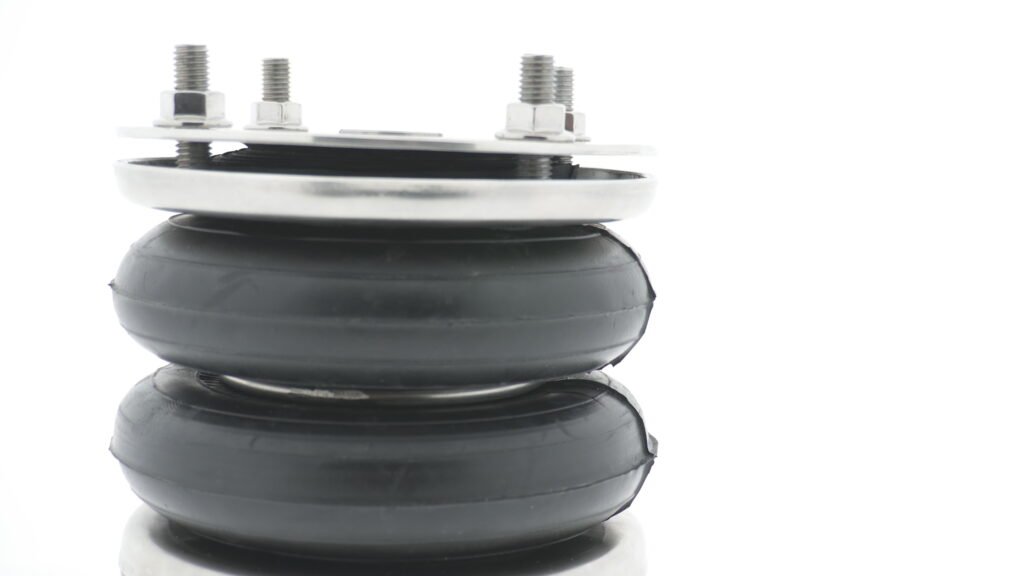
Sustainability in industrial applications is no longer optional. As industries strive for eco-friendly air bellows materials, we see a shift towards green manufacturing and energy-efficient solutions. Air bellows, also known as air springs, have become essential in vibration isolation, pneumatic actuation, and load leveling across multiple industries. The focus now is on reducing environmental impact while maintaining high-performance standards. The latest models offer enhanced durability, higher pressure capacity, and optimized elasticity. Some reinforced air springs can withstand pressures up to 12 bar, increasing load capacity while minimizing energy loss. These improvements help manufacturers meet environmental regulations without compromising efficiency or performance. The integration of innovative elastomers ensures minimal wear, reducing the need for frequent replacements. The combination of sustainable materials and advanced engineering creates a future where air springs contribute to a greener industry.
The Shift to Sustainable Elastomer Compounds
Why Traditional Rubber Needed a Change
Rubber has been the primary material for air springs, but its production has historically involved high energy consumption and carbon emissions. The push for sustainability has led to advanced elastomers that offer the same mechanical resilience but with lower environmental footprints. Many new-generation air bellows feature four-ply reinforced rubber to increase pressure resistance while reducing material degradation. This construction ensures longer service life, lowering maintenance costs and waste disposal rates. Additionally, the latest rubber formulations improve flexibility, ensuring consistent vibration absorption across various temperatures and loads. Modern natural rubber compounds now undergo low-energy processing, reducing CO2 emissions by up to 30%. These factors contribute to sustainable material sourcing, ensuring that industrial air springs align with environmental standards while maintaining optimal performance levels.
Innovative Elastomers for Sustainable Performance
Several eco-friendly elastomers have been integrated into modern air bellows:
- Natural Rubber (NR/SBR): Now sourced from certified sustainable plantations, ensuring responsible harvesting and lower emissions.
- Chlorobutyl (CIIR): A popular alternative due to its resistance to acids and extended lifespan, reducing waste and disposal issues.
- Nitrile (NBR): Preferred for oil-resistant applications, but newer bio-based nitrile compounds are replacing petroleum-derived versions.
- Ethylene Propylene Diene (EPDM): Offers excellent durability, reducing replacement cycles and waste generation, ensuring consistent elasticity.
- Chloroprene (CR): Used for weathering-resistant applications, contributing to extended lifecycle efficiency and UV protection.
By transitioning to high-performance sustainable elastomers, industries significantly cut down on waste disposal issues and production-related carbon emissions. Testing shows that eco-friendly air springs maintain their mechanical integrity for up to 40% longer than conventional designs. This improvement drastically lowers replacement frequency, reducing the overall environmental impact of industrial machinery.
The Role of Recyclable and Lightweight Metal Components
While the rubber component of air bellows is crucial, the metal end plates and bead rings also play a role in environmental impact. Lightweight metals ensure lower transportation emissions, improving supply chain efficiency.
Eco-Friendly Metal Options
- Electro-Galvanized Steel: This corrosion-resistant material extends product life, minimizing frequent replacements and waste production.
- AISI-304 Stainless Steel: Used for high-corrosion environments, ensuring reliability without chemical degradation, lasting up to 30% longer than standard steel.
- AISI-316L Stainless Steel: A premium option for chemical and marine applications, with extended reusability and recyclability.
By choosing lighter materials, manufacturers improve fuel efficiency in transportation and reduce CO2 emissions associated with supply chain logistics. Additionally, modular dismountable designs allow for partial component replacements, further reducing waste generation. Studies indicate that recyclable air spring components lower industrial scrap metal waste by up to 25% annually, reinforcing their sustainability advantages.
Energy Efficiency Gains with Advanced Manufacturing
Low-Emission Production Processes
The evolution of air spring manufacturing now includes green production methods such as:
- Cold Vulcanization Techniques: Cutting down energy consumption by up to 40% compared to traditional high-temperature vulcanization.
- Water-Based Adhesives: Reducing volatile organic compound (VOC) emissions, improving air quality and worker safety.
- Automated Energy-Efficient Molding: Minimizing waste production and ensuring optimized material usage, reducing excess material waste by 15%.
These advancements contribute to a smaller carbon footprint while maintaining high-quality performance standards. The combination of robotic assembly and low-energy curing ensures that each air bellow meets precision tolerances, reducing defective units and material waste. These refined production techniques ensure that manufacturers can scale up eco-friendly air spring production without increasing environmental impact.
The transition towards eco-friendly air bellows materials is reshaping industrial standards. By integrating sustainable elastomers, recyclable metals, and energy-efficient manufacturing, air springs are becoming a vital component of green initiatives. Companies investing in these next-generation solutions benefit from longer product life cycles, reduced operational costs, and lower environmental footprints. Testing shows that next-gen air bellows reduce maintenance-related downtime by over 20%, improving industrial productivity. As industries move forward, the push for sustainability-driven air springs will continue to play a key role in environmentally responsible engineering.
